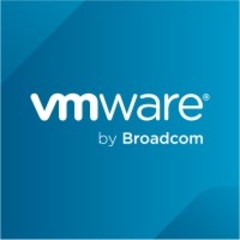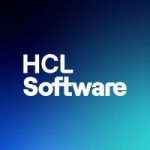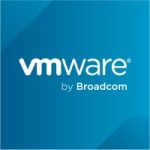What is most valuable?
What I like the most about vRA: Its seamless ability for users to be able to go pick a catalog item that we have created for them, while they are testing a new version of their code and say, "Okay, I want you to make my old version (based on these blueprints) run, please deploy me - my entire environment."
Whatever we do for the users, we use NSX integration for it, so they can have that encapsulated environment separate from their coworker trying to do the same code testing with the same IP address. Everything needs to be the exact same. That's what we love about it right now.
The biggest feature that we've seen so far is for them to lifecycle it out. A lot of times we have developers that build something, then they forget about it. Now, we lifecycle out after 30 days, so I don't have to waste those resources for a prolonged period of time.
How has it helped my organization?
It has made our developers be a bit more agile, instead of like old days, where it was, "Okay, we need a new environment, I've got to spin up the whole thing for them." Now, it's, "Hey, if you need a new environment, go to this URL, click these catalog items, whichever ones you might be working on."
The external Linux script is all automated for the developers. They just need to be able to say, "Hey, I need this new code pulled down," That's all. They don't even have to build their own workflows anymore. As for the VMware side, we can build the workflows for them, or work with somebody in the DevOps team to build workflows. So now all the developers have to do is click a couple of buttons, then they're working and they're on their way.
What needs improvement?
One of the things we saw in the initial phase was our integration with our development domains, where if we want to have more than one domain tied to it with users, we're seeing that as a struggle. However, VMware has said, some of these features have been worked out with IAM Appliances. So we are seeing a bit of improvement there, though we want to be able to see multiple domains that we can integrate into the same tenant space a little more seamlessly.
There are still some features that I would like to see changed. One pain point we have seen is users are able to set their lease expirations to zero, which means the lifecycle management gets disabled. So, it has some limitations there that we have seen. However, that's something VMware has gotten back to us and said should be fixed in future releases.
What do I think about the stability of the solution?
It's fairly stable.
There are some things that we would like to see. Maybe they already are in the current versions of 7. We're still running 6.2.5, but we would like to see a little bit more seamless integrations with some of our other products, like our DevOps tools. We use Vagrant or other things where the developer sometimes just wants to do their job through Vagrant CLI to communicate with vRealize Automation. However, we have seen that as a pain point so far.
What do I think about the scalability of the solution?
We have tested a little on how to put in some operations metrics.
For example, if say, "This will run that script, deploy up some more virtual machines, and/or if this will automate that." We haven't had to expand on that yet. We're trying right now to use Automation Center more for development purposes only. We haven't utilized it in a production environment scenario yet.
How are customer service and technical support?
We have. It was in the very beginning phases when we went to vRealize Automation. It was new for them, so it was a bit painful in the beginning, but lately it's been better.
They're snappy. They know their information.
VMware has really shaped up their support lately. Now, I can get to a intelligent conversation with somebody on their tech side, not repeat steps that I've already gone through. That's huge for us, and that was one thing which we had concerns about in the past with VMware. Those are some of the things we mentioned to them: "We need better supportability of your products." We have been seeing that a lot lately.
Which solution did I use previously and why did I switch?
At a prior company that I came from, we used vCloud Director, and that was a product I loved.
It was something I could not obtain any more, because at the partner level you need VMware to still maintain the vCloud Director licensing. However, our company does have a giant vCloud Director pool now, the one that I work for, but the reason for vRealize Automation was, we can't get vCloud, which I needed a nice lifecycle control management, then we went with vRealize Automation, because it had the majority of the functions that you see in VCD but with just a little bit more added functions at that time. With the integration of NSX, that was something that was key for us. We really needed to be able to provision environments on the fly for them to have very like-for-like scenarios. However, when they're doing their QA testing or pre-stage testings, we needed the ability for encapsulation of those environments to be separate.
That's one reason we saw automation with integration with NSX and VSAN, it was a no-brainer for us.
How was the initial setup?
I was involved in the initial setup.
The initial setup for the 6.2 environment was a little bit painful, because you have to have a separate the IAS server and different things, like a Windows server. Now, with the new 7, I know it's all appliance-based, which is beautiful.
It's easy to set up. I have a PoC environment right now we're toying with, and it's a lot more simplistic than the prior versions were. I'm more familiar with the old architecture of it, but I'm looking forward to really implementing the new architecture of vRealize Automation.
What's my experience with pricing, setup cost, and licensing?
The vRealize Suite, it is a very expensive product. However, with all the things it did offer us, in the long run, it made sense for us, because we got to cut down a lot of our public cloud costs due to on-premise solutions.
Which other solutions did I evaluate?
We did utilize vCloud Air. It was one of the other tools that we did try out.
Now, I don't like to talk bad about VMware, but it was a disastrous product. It was vCloud Director, which I was familiar with, but the supportability was not there. There were some bugs whenever we were trying to do automation and workloads between our on-premise into the vCloud Air. That was the one thing we were trying to utilize, and it just didn't work well.
Then, the other automation solution we were using Chef and Puppet (and other things) for our DevOps tools, but we really wanted to shift more focus to the developers. They don't want to have to command-code out everything. Some of them want to just go, "Click, click, done."
When I went through the first demo of vRA, that's when I saw that this product would be a very beneficial product for our company.
What other advice do I have?
Really pay attention to how you design your blueprints and your workflows, because a lot of developers do not want to do that. They do not want to design their own blueprints and workflow operations. They want it to already have been done for them. Make sure you have a strong relationship with your DevOps team so you can get the most out of this product. Because if you are trying to do it single-handedly as an Operations Center without the go-between, it'll be a struggle to get Development onboard with this type of product. But once they do get on board with the product, they won't want to look back.
Most important criteria when selecting a vendor: Supportability is huge, not to say everybody on our team should be experts in everything they do, but when you do need help, you want to make sure that you're working with top-tier support. I don't want to have to run through the wringer of, "Okay, I got to go through Tier-1, then Tier-2, then finally I can work with Tier-3 (somebody on my level of knowledge)."
Disclosure: My company does not have a business relationship with this vendor other than being a customer.
















